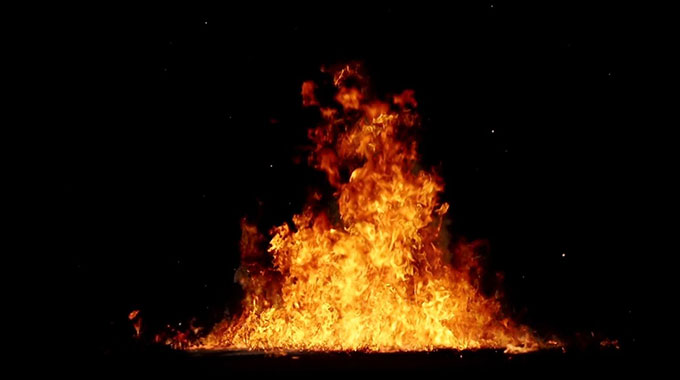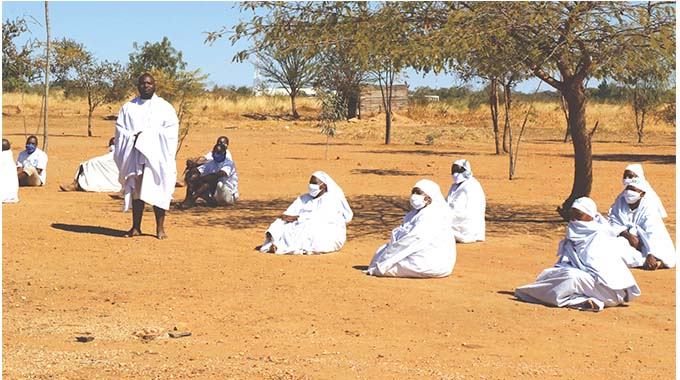Avoid burns this winter

Dr Tatenda Simango
Winter is upon us and we need to keep warm and safe, now more than ever. The warm bath, hot drink and meal keep us warm and toasty and make life bearable in these frigid temperatures.
The use of improvised hot water bottles at night to keep the frost from biting our toes, unfortunately increases the exposure to burns especially to the curious minds of children. They touch, pull, tug anything within reach.
In medical school burns was a topic that could never be exhausted, the lecturers seemed to love tormenting us with it. Burn patients would be admitted for weeks in the ward, in great pain and anguish. This also meant more quizzing from our tutors.
It was only during my junior doctor training that I realised we should have spent more time discussing burns and how to manage them. Winter has a surge in the number of burns usually in the under 10-year-old age group. I can never get used to heartbreaking shrieks of pain made by children who would have sustained burns. The accompanying parents would be helpless and just as miserable. Patients come with all sorts of home remedies applied trying to provide relief to the ordeal the burnt patient is going through. Some of the commonly applied remedies on the burns included margarine, raw eggs, salt-water, herbs like aloe and urine.
In this article will we discuss a few basics that will help us prevent burns and in the event that they do occur the appropriate first aid management. This is a distressing condition for the patient and the relatives too. The pain is extreme, it disrupts normal life because of long hospitalisation periods and disability can arise from it.
A burn is skin damage from exposure to heat. The skin is made up of 3 layers. The epidermis — the outermost layer, it is water proof. The dermis is next, beneath the epidermis and contains sweat glands, hair follicles and connective tissue (this keeps the layer intact/connected).
The deepest layer is the hypodermis/ subcutaneous layer, made mostly of fat. Some functions of the skin include protecting internal organs (muscle, bone), heat regulation and aesthetics (beauty). Common causes of burns include hot fluids, hot solids, open flame, chemical burns and electric burns.
People are vulnerable to being burnt but children and adult women are particularly vulnerable to burns.
The higher risk for females is associated with open fire cooking, or inherently unsafe cookstoves (open fires/ gas/ paraffin), which can ignite loose clothing (amaZambia). The use of cooking pots on ground level (pots on ground level are more readily knocked over, and can increase the risk of scald burns, for example — among toddlers and young children.
In children a major risk is improper adult supervision though a considerable number of burn injuries in children result from child maltreatment. As children learn to reach, crawl, stand, walk, run and role play they should be closely monitored as they are easy victims to sustaining burns.
It is worth noting that underlying medical conditions, including epilepsy, peripheral neuropathy, and physical and cognitive disabilities do predispose these groups to burns. The extent or degree of the burns is determined by temperature of causative agent and the duration of contact with the causative agent. For example, boiling water gives more severe burns than tea with milk or lemon, and hot cooking oil has very severe burns in comparison to boiling water. Duration of contact; the length of contact makes the degree of burns worse as the burn “digs deeper”.
First aid is very important in reducing the extent or degree of the burn. Do not start first aid before ensuring your own safety (such as, switching off electrical current, wearing gloves for chemicals etc.)
Stop burning immediately by putting out the fire or stop the person’s contact with hot liquid, steam, or other material. If the victim has been exposed to open flame burns and their clothing is alight help the person “stop, drop, and roll” to smother the flames.
Applying a blanket over the victim helps put out the fire. Remove smouldering material from the person and burnt clothing. If clothing sticks to skin, cut or tear around it.
Remove constrictive clothing immediately and take off jewellery, belts, and tight clothing. Burns can swell quickly.
For burns affecting epidermis — first layer; hold burned skin under cool water, running water or immerse in cool water until the pain subsides (not cold water — as cold water could make the burn worse, as burns can be caused by the cold). Use compresses if running water isn’t available. Protect burn by applying a sterile, non-adhesive bandage or clean cloth. Apply a petroleum-based ointment two to three times per day.
To treat pain give over-the-counter pain reliever such as paracetamol or ibuprofen. First degree burns heal in 5 to 7 days. For second-degree burns (affecting epidermis and dermis), immerse in cool water for 10 or 15 minutes. Use compresses if running water isn’t available. Protect burn by wrapping the patient in a clean cloth or sheet and transport to the nearest appropriate facility for medical care.
In chemical burns, remove or dilute the chemical agent by irrigating with large volumes of water.
Prevent shock by laying the person flat, elevate feet about 30cm and elevate burn area above heart level, if possible. Cover the person with a clean blanket or coat.
Second degree burns take 2 to 3 weeks to heal.
Do not:
Apply odd concoctions (margarine, herbs, salt . . .) that are not medically proven to treat burns.
Apply ice because it deepens the injury, can lower body temperature and cause further pain and damage.
Prolong cooling with water because it will lead to hypothermia (low body temperature).
Open blisters until topical antimicrobials can be applied, such as by a health-care provider.
Decision to admit a patient in hospital is determined by the following criteria;
Vulnerable age groups under 5 and over 65 years,
suspected abuse,
burns to special areas hands, foot, joints and groin,
percentage body surface area burned, greater than 10-15% surface area,
inhalational burns,
circumferential burns (burns that “go around” a body part like a burn around the arm)
Underlying conditions, like diabetes mellitus and hypertension.
Burns are preventable, please be vigilant and protect your family.
Dr Tatenda Simango can be contacted on [email protected] or follow him on Facebook@ 9th Avenue Surgery.










Comments